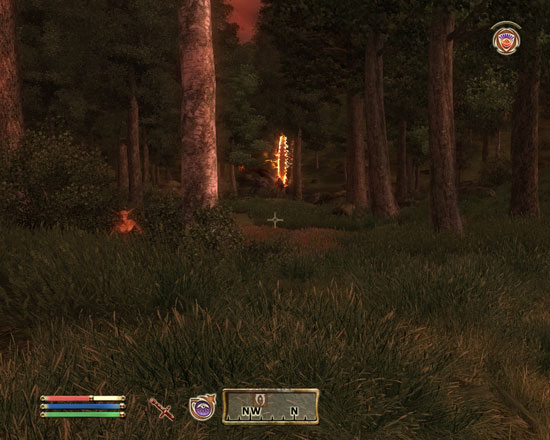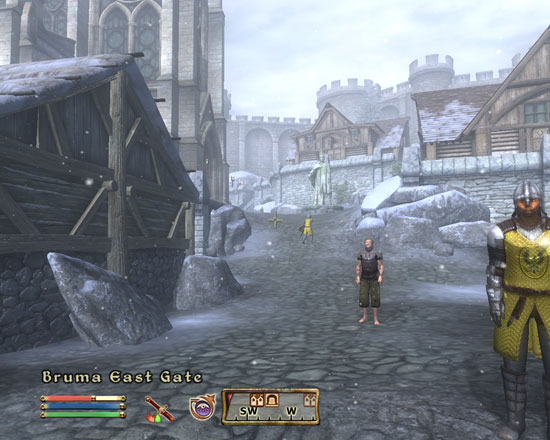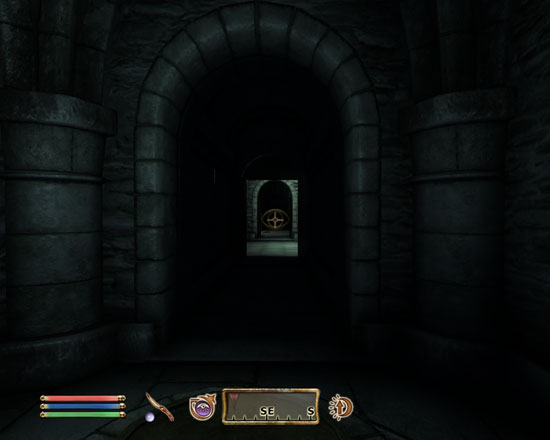The Elder Scrolls IV: Oblivion GPU Performance
by Anand Lal Shimpi on April 26, 2006 1:07 PM EST- Posted in
- GPUs
When both Doom 3 and Half Life 2 came out we burned the midnight oil trying to put together guides for CPU and GPU performance in the games as soon as they were released. Much to our surprise, especially given the performance hype that had preceeded both of them, both games ran relatively well on most mainstream hardware that was available at the time. One GPU generation later and the worries about performance under Doom 3 and Half Life 2 were yesterday's news. The same, unfortunately, cannot be said about Bethesda Softworks' latest immersive RPG: Oblivion.
The game itself is more addicting and immersive than any of its predecessors and its reviews confirm that. But we're not here to tell you that the game is great, we're here to tell you what you need to run it. The fact of the matter is that Oblivion is the most stressful game we've ever encountered, taking the crown away from F.E.A.R. as something that simply doesn't run well on anything. Obtaining good performance under Oblivion is so hard that a number of optimization guides have popped up helping users do whatever it takes to make the game playable. At AnandTech we've been using the Oblivion Tweak Guide from Tweakguides.com and recommend reading it if you're looking to get a good idea for the impact of the many visual settings available in the game.
Just as we've done in our previous articles on Doom 3 and Half Life 2, we're splitting our Oblivion performance coverage into multiple parts. This first part will focus on high-end and mid-range PCIe GPU performance and future articles will look at CPU performance as well as low-end GPU and AGP platform performance if there is enough demand for the latter two. Where we take this series of articles in the future will depend on many of your demands and requests, so please make them heard.
Benchmarking Oblivion
There are really three types of areas you encounter while playing Oblivion, you'll find your character either: 1) Outdoors, 2) Inside a town but still outdoors, or 3) Inside a building or dungeon. Interestingly enough, our seemingly haphazard list of Oblivion locales is actually organized in ascending order of performance. You'll encounter your absolute highest performance inside buildings while you'll actually contemplate spending $1200 on graphics cards whenever you find yourself outside. It only made sense that we benchmarked in each of those three areas, so we constructed manually scripted (read: walk-throughs by hand) benchmarks taking us through one of each type of area in Oblivion.

Oblivion Gate Benchmark
The first test is our Oblivion Gate benchmark, which just so happens to be the most stressful out of all three. In this test we've spotted an Oblivion gate in The Great Forest and walk towards it as scamps attempt to attack our character. The benchmark takes place in a heavily wooded area with lots of grass; combined with the oblivion gate itself, even the fastest GPUs will have trouble breaking 30 fps here.

Town Benchmark
The next test takes place in the town of Bruma and simply features our character walking through a portion of the town. There are a few other characters on screen but no major interaction takes place. Despite the simplicity of the test, since it takes place outside the frame rate is already quite stressful on some mid-range GPUs.

Dungeon Benchmark
Our final test takes place in the Sanctum on our way to the Imperial City prisons; this "Dungeon" benchmark showcases indoor area performance and consists of our character sneaking through the dimly lit Sanctum. There are guards around however none appear in the view of our character. Many cards will do well in this test, but unless they can pass the first benchmark their performance here is meaningless.
We measured frame rates using FRAPS and reported both the minimum and average frame rates in our charts (we left out maximum frame rates because they simply aren't as important and they made the graphs a little too difficult to read when we included them). The minimum frame rates are indicated by a vertical white line inside the bar representing average frame rate.
Since we measured performance using FRAPS and not through a scripted timedemo sequence, the amount of variance between runs is higher than normal; differences in performance of 5% or less aren't significant and shouldn't be treated as such.










100 Comments
View All Comments
bobsmith1492 - Wednesday, April 26, 2006 - link
I'm playing with a 9700 mobility (basically 9600 ultra) in my laptop with a P-M and a gigger at 1024, medium settings about like you set it. Where in the world did all those extra settings come from though (shadows, water)? Is that something outside the game itself?ueadian - Thursday, April 27, 2006 - link
I played this game fine on my X800XL with high settings.. Yeah it PROBABLY dipped into the 20's but honestly I never really noticed "lag". I shortcircuited my X800XL by stupidly putting a fan with a metal casing on top of it it went ZZZZT and died. I bought a 7900 GT for 299.99 and voltmoded it to GTX speeds and I really don't notice a difference while playing the game. Yeah I'm sure if I payed attention to FPS I'd see it, but really, the only place I noticed lag with my X800XL at high settings was by oblivion gates, and my 7900 GT at 680 core 900 mem locks up near oblivion gates as well. I was sort of forced to "upgrade" my card, but the 7900 GT is the best value for the money right now considering you can do a pen mod to get it to run PAST GTX speeds fairly easy. I have a crappy CRT who's max resolution is 1024x768 and dont plan on upgrading it anytime soon, so I don't need 512mb memory to throw the resolution up to goddly high settings, besides, im pretty blind, I find it easier to play most online games like FPS's at lower resolution just to gain an advantage. Oblivion is near perfection as a GAME it's the most enjoyable game I've ever played, and I've been playing games since Doom. Yeah the engine does suck, and I was really disapointed to have my brand new top of the line video card actualy STUTTER in a game, but really, does it completely ruin the whole game for you? If you have played it you know that it doesn't.thisisatest - Thursday, April 27, 2006 - link
7900 series isn't what I consider to be the top of the line. There is high end and there is top of the line. The top of the line is clear.poohbear - Wednesday, April 26, 2006 - link
im really curious to see how dualcore cpus perform as Oblivion is supposed to take advantage of multithreading. if anandtech could do a cpu performance chart that'd be great. firingsquad did a cpu performance chart but only @ 2 resolutions, 800x600 & 1280x1024, they found significant differences between dualcore and singlecore on 800x600 but no diff on 1280x1024. now, i play @ 1024x768 on my 6800GT, so wondering if a dualcore would help in that resolution. also, if u could investigate some of the supposed tweaks for dualcores and if they truly work that'd be great too. thanks.Eris23007 - Wednesday, April 26, 2006 - link
A friend of mine is playing it on a 3.4GHz Northwood; he told me that when he enabled HyperThreading he got an immediate ~10% (or so) improvement.
That's a pretty good indication that dual cores will help a *lot*, in my view...
mpeavid - Thursday, April 27, 2006 - link
10% is VERY pooor multi threading performance. A decent multi threaded app should give 40-60 and higher for highlt efficient codes.nullpointerus - Thursday, April 27, 2006 - link
HT isn't the same as having dual cores. IIRC, ~10% improvement from HT is rather typical in certain areas where multiple cores have significantly better returns.Akaz1976 - Wednesday, April 26, 2006 - link
Anyone have any idea how 9800PRO compares to x800?hoppa - Friday, April 28, 2006 - link
What this test fails to mention is that I'm running a 9800 pro, Athlon XP 3000+, 1.5 gigs of ram, at 1280x768, and the game runs quite well even at medium settings. This game is very stressful at maximum everything but still manages to run incredibly well on older rigs and lower settings. Had I not played this game, after seeing this article I would've thought that it'd be impossible on my rig, but the truth is I've got plenty of computing power to spare.xsilver - Wednesday, April 26, 2006 - link
9800pro is considered midrange/lowend now -- i guess that article is coming latermy guess is aprox 10% less than the lowest card on each graph besides the 7300gs (also you dont have HDR)